Indigenous art embedded in new Granite Island causeway
The reopening of the Granite Island causeway at Victor Harbor has created an opportunity for local Indigenous artists to share two important Ngarrindjeri-Ramindjeri Dreaming stories now permanently embedded in the new structure.
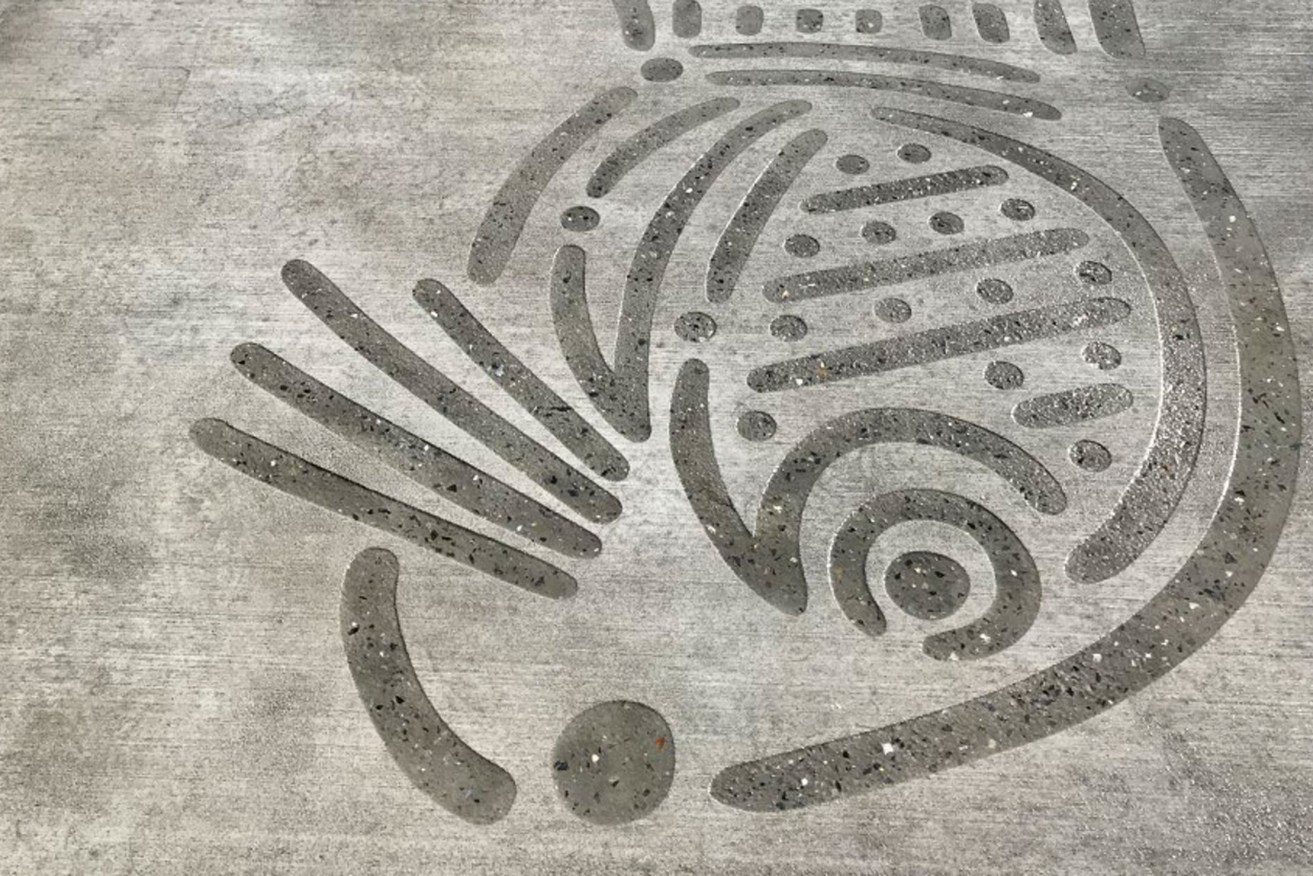
Detail of the Indigenous artwork on the new Granite Island Causeway. Photo: supplied
Created by a collaboration of Indigenous artists including Cedric Varcoe, Amanda Westley, Kyla McHughes, Kevin Kropinyeri and Jamaya Branson – who are all cousins – designs depicting the stories of Kondoli, the powerful giant and keeper of fire, and Ngurunderi, the ancestral creation being, have been sandblasted on the concrete structure of the 600m-long causeway.
“It feels so special and so powerful that we, as cousins, are able to share that story, that we are the custodians of that story – it makes us proud and strong within our spirit,” Varcoe says.
“We are sharing this story with the wider community, international visitors and those that travel from afar to visit our land and waters.
“It is so special that this story is embedded in the infrastructure and when people are walking across the causeway, they will be walking across thousands and thousands of years of continuous sacred connection and belonging to this land.”
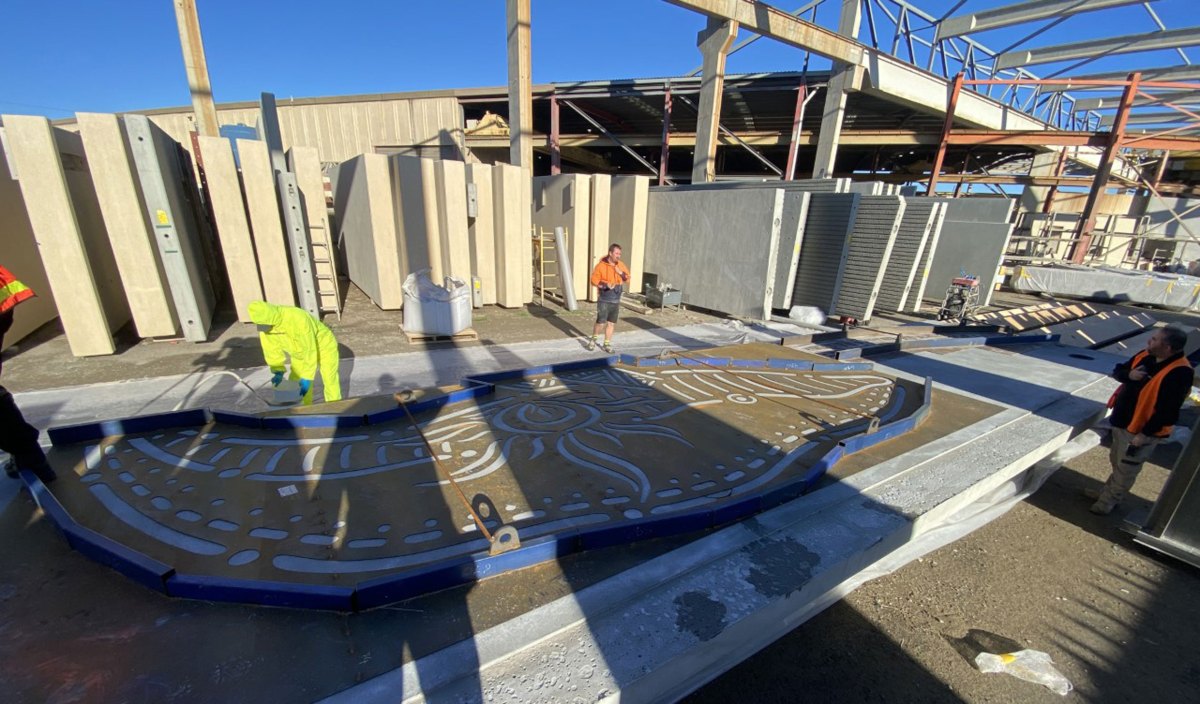
The Ngarrindjeri-Ramindjeri Dreaming designs were sandblasted onto the concrete structure. Photo: supplied
Ngurunderi is the story of the great Dreamtime ancestral being whose exploits shaped laws and creatures and created the landscape throughout the Lakinyerar (Clans) of the Ngarrindjeri nation.
Kondoli Dreaming tells of Kondoli, The Whale Man, who could create fire when he danced and was transformed into a whale when he dived into the sea after being wounded by a spear.
“It’s finally time that our stories are heard and shared,” says Varcoe, who lives on Ngarrindjeri-Ramindjeri Country, at Port Elliot, and is well known for his painting.
“I was fortunate enough to grow up with elders and share that Ngurunderi and Kondoli story, and share about our Ramindjeri community, which has really made me passionate now as an artist to represent our history and connection to Country.
“A lot of my work is very colourful and that’s because they are the colours of country, that’s the spirit of country, that’s what I see on Country, and I want people to take that visual and think of Country.”
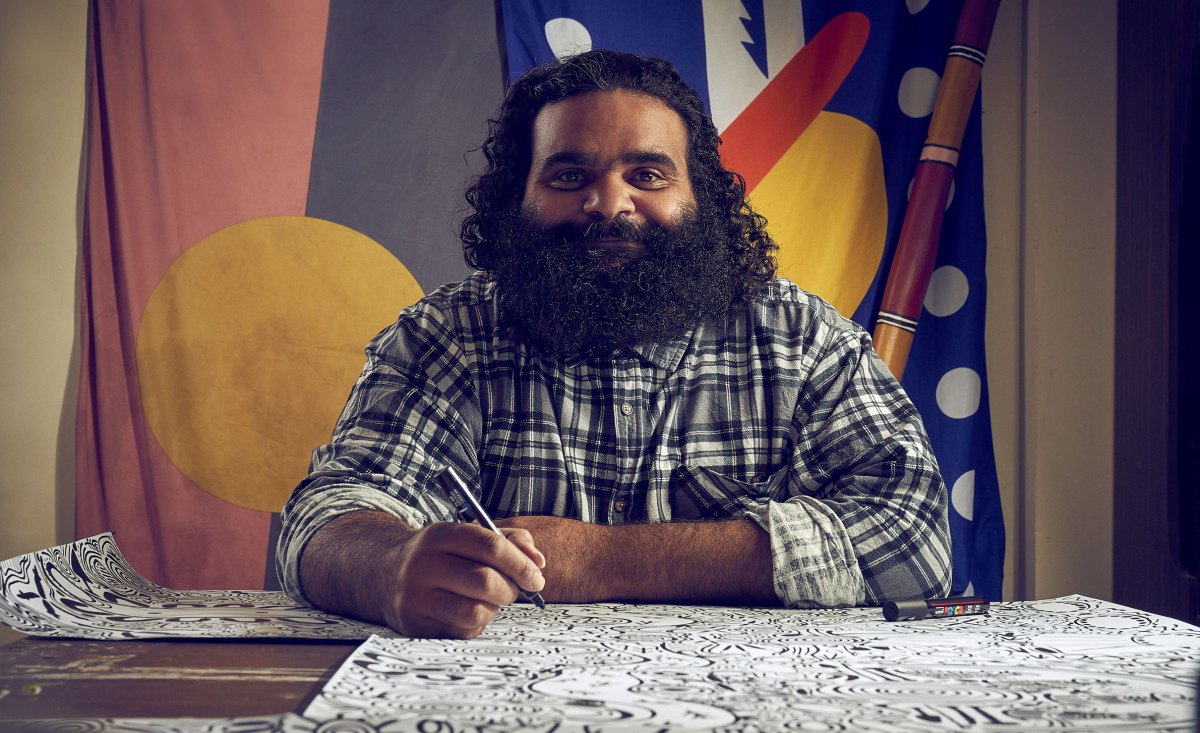
Cedric Varcoe in his garage-turned-art-studio at Port Elliot. Photo: Aubrey Jonsson
Amanda Westley shares similar sentiments: “I don’t paint anything other than Ngarrindjeri Country and Ngarrindjeri stories,” she says. “When I first started out, I just painted for enjoyment, for myself, and I didn’t share it with anyone – that was a self-identity thing.”
Amanda’s grandmother was a part of the stolen generation, so she says she and her mother grew up without culture and language.
“Finding your culture is a super hard journey but it’s super rewarding. My mum and her story were definitely a push to connect back with family, for me and for her and for my children.
“I wasn’t sure or confident that my art would be accepted, then once I learnt more about my culture and my family and my language, the confidence that I’ve gotten from that has allowed me to feel proud to share my art.
“It’s one thing to be recognised and be accepted by your community, but to be accepted by my elders was super important to me. I know who I am now.”
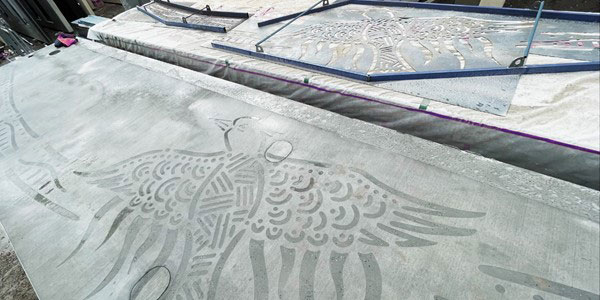
This Granite Island causeway project has opened more opportunities for the cousins to work together in the future, with the Goolwa Wharf next on the agenda.
“I hope people will connect with our story, connect with our spiritual Country and really open up their mind to our land and waters that are a spirit, a living body,” says Varcoe.
“Once you open up your mind and your heart to it, you’ll connect with it and feel a passion to look after it, take care of it and don’t damage it.”
The opening of the new causeway to the public this week is not only the first time visitors get to see these remarkable stories embedded on the walkway, it is also the first opportunity the artists have had to see them on site, after they were sandblasted onto the concrete by local company Bianco Precast.
“I really hope the piece is embraced by everyone,” Westley says. “I feel like that’s what we need down here – there is such a huge culture here that people are just not aware of. I hope everyone is as excited as me.”
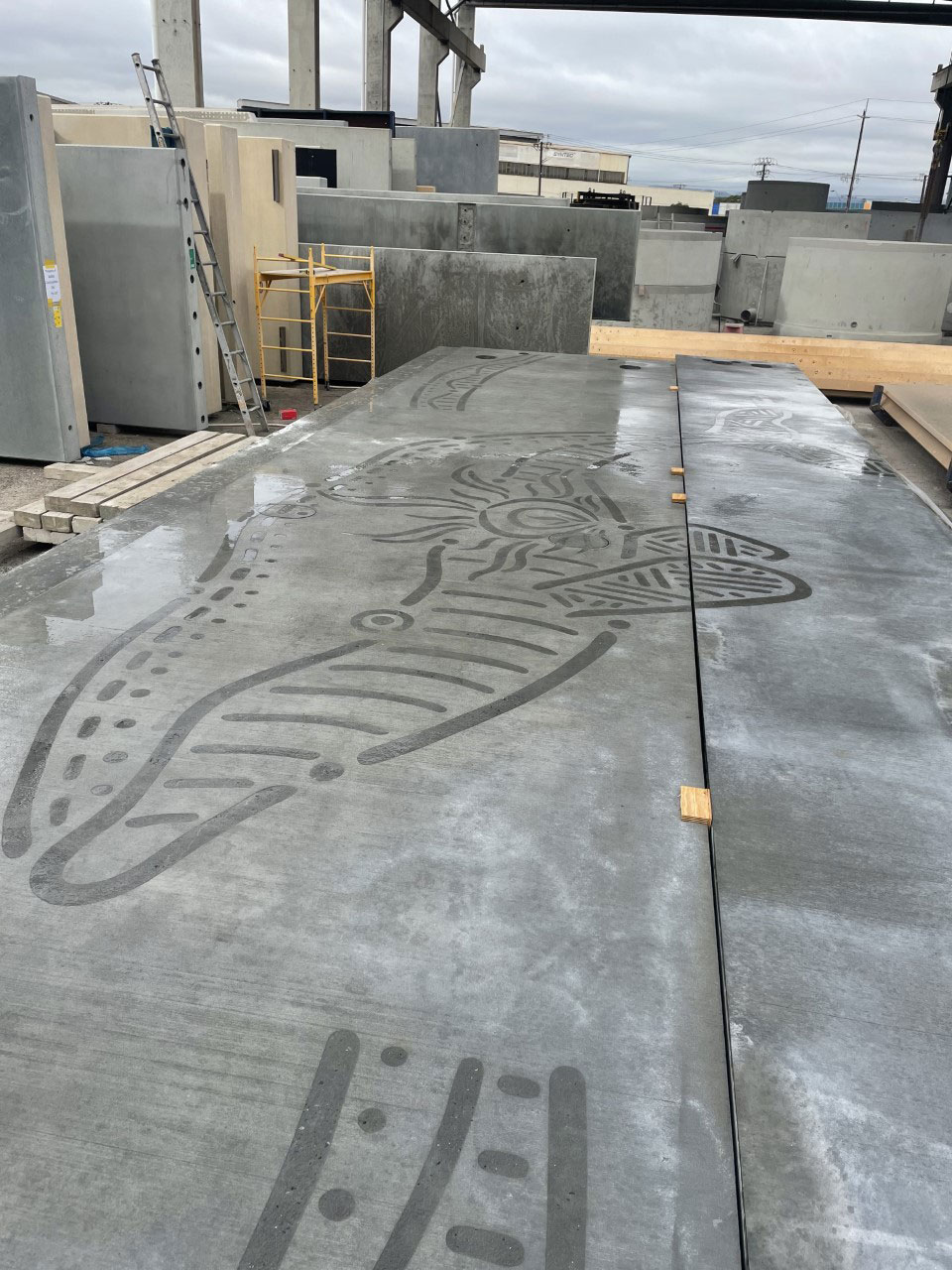
Here you can read more about the stories of Ngurunderi and Kondoli, as told by the artists and shared by the Department for Infrastructure and Transport:
Ngurunderi Dreaming of Pultung
Ngurunderi is the great Dreamtime ancestral being of the Ngarrindjeri nation. His exploits shaped laws, creatures and created the landscape throughout the Lakinyerar (Clans) of the Ngarrindjeri nation.
Ngurunderi travelled to Ramindjeri country, where he was in pursuit of his two wives who had escaped from him. When he heard his wives splashing and playing in the direction of Kings Point, Ngurunderi threw his club (Plonggi) down in anger, creating what is today known as Longkuwa (The Bluff). Ngurunderi then threw his spear (Kaiki) from the mainland into the sea to create Kaikangk (Granite Island).
Before he journeyed across to Kangaroo Island, where he joined the spirit world and became a tuldi (star) in the Milky Way, Ngurunderi walked over to Kaiki and made a shelter from boulders. This place is called Pangarri Marti (Umbrella Rock).
When visiting Pultung, Kaikangk and Longkuwa, you will remember how Ngurunderi shaped the landscape of the Ngarrindjeri and Ramindjeri.
Kondoli Dreaming
Kondoli the Whale Man was the only person who could create fire when he danced. When he danced, sparks flew from his body and flames from his feet, leaving everyone amazed and in awe of this large, powerful man.
Some grew jealous and wanted the fire for themselves. When his back was turned, others rose up and threw spears at him, which lodged deep into the neck of Kondoli. Flames burst out from the wound from their spears. Kondoli dove into the sea to put the fire out and was instantly transformed into a whale.
Kondoli surfaced at Pultung (Victor Harbor) and to this day Kondoli continues to spurt water from his back, which is a reminder of his wound.




